NVIDIA G-Sync Review
by Anand Lal Shimpi on December 12, 2013 9:00 AM EST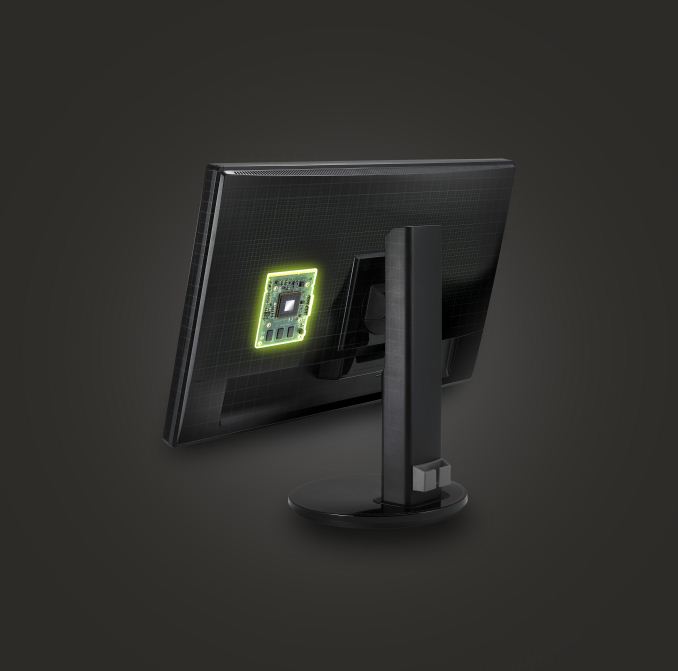
It started at CES, nearly 12 months ago. NVIDIA announced GeForce Experience, a software solution to the problem of choosing optimal graphics settings for your PC in the games you play. With console games, the developer has already selected what it believes is the right balance of visual quality and frame rate. On the PC, these decisions are left up to the end user. We’ve seen some games try and solve the problem by limiting the number of available graphical options, but other than that it’s a problem that didn’t see much widespread attention. After all, PC gamers are used to fiddling around with settings - it’s just an expected part of the experience. In an attempt to broaden the PC gaming user base (likely somewhat motivated by a lack of next-gen console wins), NVIDIA came up with GeForce Experience. NVIDIA already tests a huge number of games across a broad range of NVIDIA hardware, so it has a good idea of what the best settings may be for each game/PC combination.
Also at CES 2013 NVIDIA announced Project Shield, later renamed to just Shield. The somewhat odd but surprisingly decent portable Android gaming system served another function: it could be used to play PC games on your TV, streaming directly from your PC.
Finally, NVIDIA has been quietly (and lately not-so-quietly) engaged with Valve in its SteamOS and Steam Machine efforts (admittedly, so is AMD).
From where I stand, it sure does look like NVIDIA is trying to bring aspects of console gaming to PCs. You could go one step further and say that NVIDIA appears to be highly motivated to improve gaming in more ways than pushing for higher quality graphics and higher frame rates.
All of this makes sense after all. With ATI and AMD fully integrated, and Intel finally taking graphics (somewhat) seriously, NVIDIA needs to do a lot more to remain relevant (and dominant) in the industry going forward. Simply putting out good GPUs will only take the company so far.
NVIDIA’s latest attempt is G-Sync, a hardware solution for displays that enables a semi-variable refresh rate driven by a supported NVIDIA graphics card. The premise is pretty simple to understand. Displays and GPUs update content asynchronously by nature. A display panel updates itself at a fixed interval (its refresh rate), usually 60 times per second (60Hz) for the majority of panels. Gaming specific displays might support even higher refresh rates of 120Hz or 144Hz. GPUs on the other hand render frames as quickly as possible, presenting them to the display whenever they’re done.
When you have a frame that arrives in the middle of a refresh, the display ends up drawing parts of multiple frames on the screen at the same time. Drawing parts of multiple frames at the same time can result in visual artifacts, or tears, separating the individual frames. You’ll notice tearing as horizontal lines/artifacts that seem to scroll across the screen. It can be incredibly distracting.
You can avoid tearing by keeping the GPU and display in sync. Enabling vsync does just this. The GPU will only ship frames off to the display in sync with the panel’s refresh rate. Tearing goes away, but you get a new artifact: stuttering.
Because the content of each frame of a game can vary wildly, the GPU’s frame rate can be similarly variable. Once again we find ourselves in a situation where the GPU wants to present a frame out of sync with the display. With vsync enabled, the GPU will wait to deliver the frame until the next refresh period, resulting in a repeated frame in the interim. This repeated frame manifests itself as stuttering. As long as you have a frame rate that isn’t perfectly aligned with your refresh rate, you’ve got the potential for visible stuttering.
G-Sync purports to offer the best of both worlds. Simply put, G-Sync attempts to make the display wait to refresh itself until the GPU is ready with a new frame. No tearing, no stuttering - just buttery smoothness. And of course, only available on NVIDIA GPUs with a G-Sync display. As always, the devil is in the details.
How it Works
G-Sync is a hardware solution, and in this case the hardware resides inside a G-Sync enabled display. NVIDIA swaps out the display’s scaler for a G-Sync board, leaving the panel and timing controller (TCON) untouched. Despite its physical location in the display chain, the current G-Sync board doesn’t actually feature a hardware scaler. For its intended purpose, the lack of any scaling hardware isn’t a big deal since you’ll have a more than capable GPU driving the panel and handling all scaling duties.
G-Sync works by manipulating the display’s VBLANK (vertical blanking interval). VBLANK is the period of time between the display rasterizing the last line of the current frame and drawing the first line of the next frame. It’s called an interval because during this period of time no screen updates happen, the display remains static displaying the current frame before drawing the next one. VBLANK is a remnant of the CRT days where it was necessary to give the CRTs time to begin scanning at the top of the display once again. The interval remains today in LCD flat panels, although it’s technically unnecessary. The G-Sync module inside the display modifies VBLANK to cause the display to hold the present frame until the GPU is ready to deliver a new one.
With a G-Sync enabled display, when the monitor is done drawing the current frame it waits until the GPU has another one ready for display before starting the next draw process. The delay is controlled purely by playing with the VBLANK interval.
You can only do so much with VBLANK manipulation though. In present implementations the longest NVIDIA can hold a single frame is 33.3ms (30Hz). If the next frame isn’t ready by then, the G-Sync module will tell the display to redraw the last frame. The upper bound is limited by the panel/TCON at this point, with the only G-Sync monitor available today going as high as 6.94ms (144Hz). NVIDIA made it a point to mention that the 144Hz limitation isn’t a G-Sync limit, but a panel limit.
The G-Sync board itself features an FPGA and 768MB of DDR3 memory. NVIDIA claims the on-board DRAM isn’t much greater than what you’d typically find on a scaler inside a display. The added DRAM is partially necessary to allow for more bandwidth to memory (additional physical DRAM devices). NVIDIA uses the memory for a number of things, one of which is to store the previous frame so that it can be compared to the incoming frame for overdrive calculations.
The first G-Sync module only supports output over DisplayPort 1.2, though there is nothing technically stopping NVIDIA from adding support for HDMI/DVI in future versions. Similarly, the current G-Sync board doesn’t support audio but NVIDIA claims it could be added in future versions (NVIDIA’s thinking here is that most gamers will want something other than speakers integrated into their displays). The final limitation of the first G-Sync implementation is that it can only connect to displays over LVDS. NVIDIA plans on enabling V-by-One support in the next version of the G-Sync module, although there’s nothing stopping it from enabling eDP support as well.
Enabling G-Sync does have a small but measurable performance impact on frame rate. After the GPU renders a frame with G-Sync enabled, it will start polling the display to see if it’s in a VBLANK period or not to ensure that the GPU won’t scan in the middle of a scan out. The polling takes about 1ms, which translates to a 3 - 5% performance impact compared to v-sync on. NVIDIA is working on eliminating the polling entirely, but for now that’s how it’s done.
NVIDIA retrofitted an ASUS VG248QE display with its first generation G-Sync board to demo the technology. The V248QE is a 144Hz 24” 1080p TN display, a good fit for gamers but not exactly the best looking display in the world. Given its current price point ($250 - $280) and focus on a very high refresh rate, there are bound to be tradeoffs (the lack of an IPS panel being the big one here). Despite NVIDIA’s first choice being a TN display, G-Sync will work just fine with an IPS panel and I’m expecting to see new G-Sync displays announced in the not too distant future. There’s also nothing stopping a display manufacturer from building a 4K G-Sync display. DisplayPort 1.2 is fully supported, so 4K/60Hz is the max you’ll see at this point. That being said, I think it’s far more likely that we’ll see a 2560 x 1440 IPS display with G-Sync rather than a 4K model in the near term.
Naturally I disassembled the VG248QE to get a look at the extent of the modifications to get G-Sync working on the display. Thankfully taking apart the display is rather simple. After unscrewing the VESA mount, I just had to pry the bezel away from the back of the display. With the monitor on its back, I used a flathead screw driver to begin separating the plastic using the two cutouts at the bottom edge of the display. I then went along the edge of the panel, separating the bezel from the back of the monitor until I unhooked all of the latches. It was really pretty easy to take apart.
Once inside, it’s just a matter of removing some cables and unscrewing a few screws. I’m not sure what the VG248QE looks like normally, but inside the G-Sync modified version the metal cage that’s home to the main PCB is simply taped to the back of the display panel. You can also see that NVIDIA left the speakers intact, there’s just no place for them to connect to.
It looks like NVIDIA may have built a custom PCB for the VG248QE and then mounted the G-Sync module to it.
The G-Sync module itself looks similar to what NVIDIA included in its press materials. The 3 x 2Gb DDR3 devices are clearly visible, while the FPGA is hidden behind a heatsink. Removing the heatsink reveals what appears to be an Altera Arria V GX FPGA.
The FPGA includes an integrated LVDS interface, which makes it perfect for its role here.


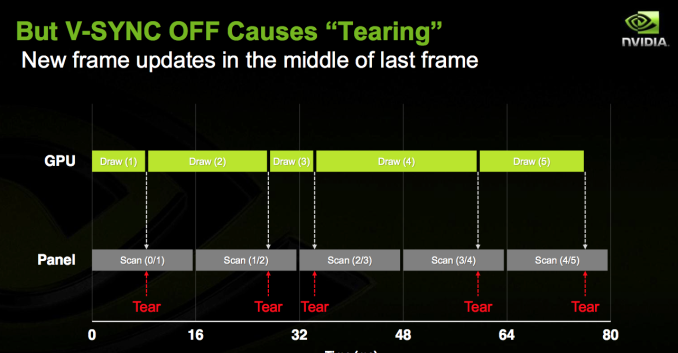
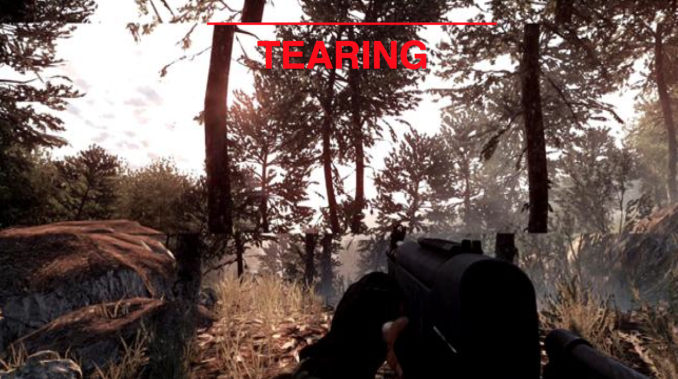

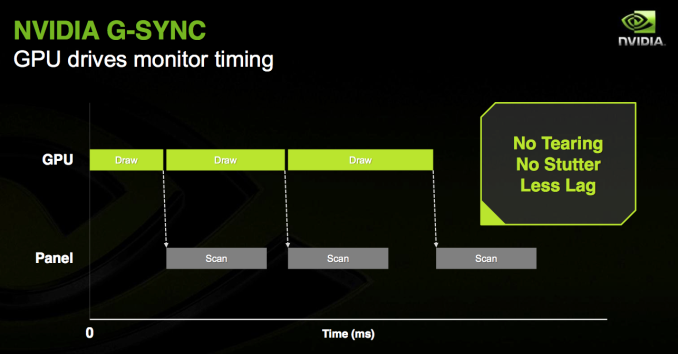
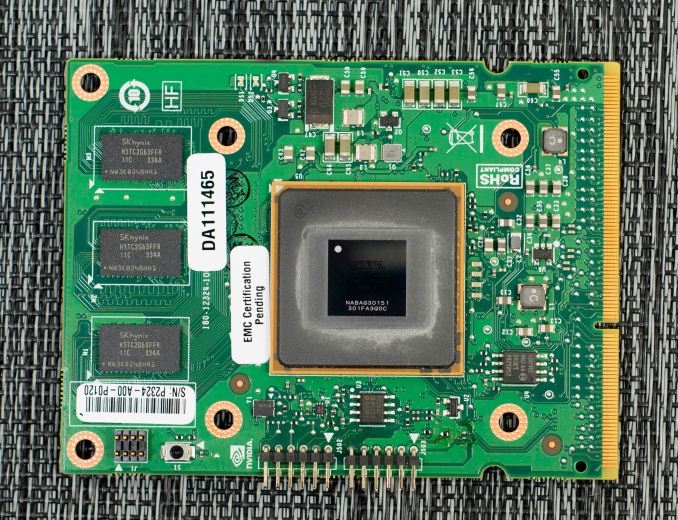
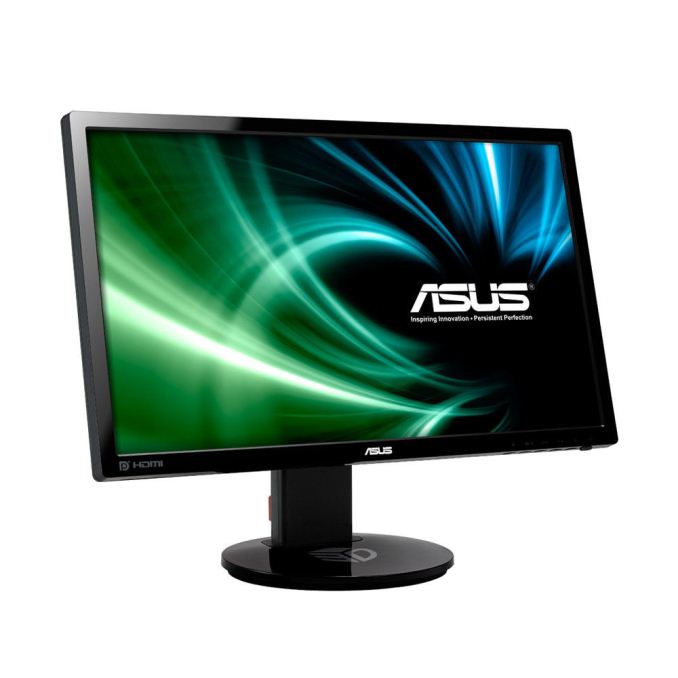
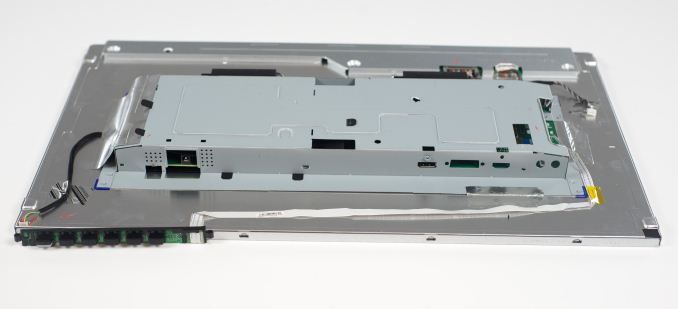
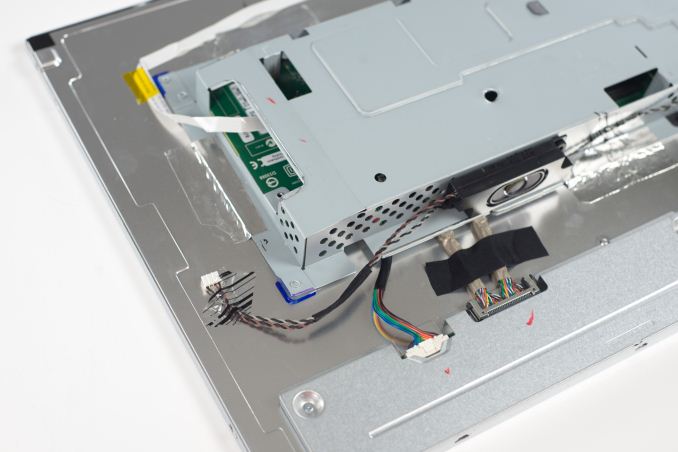
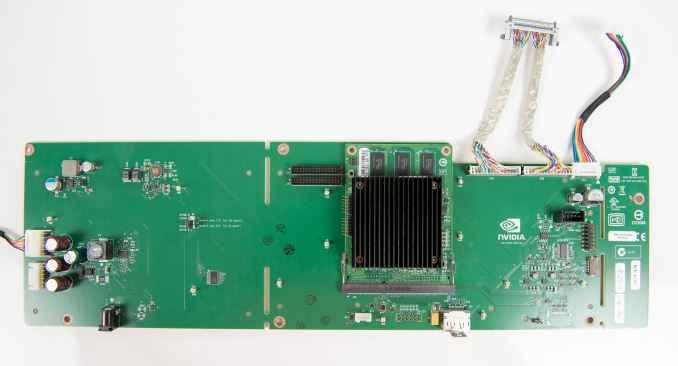
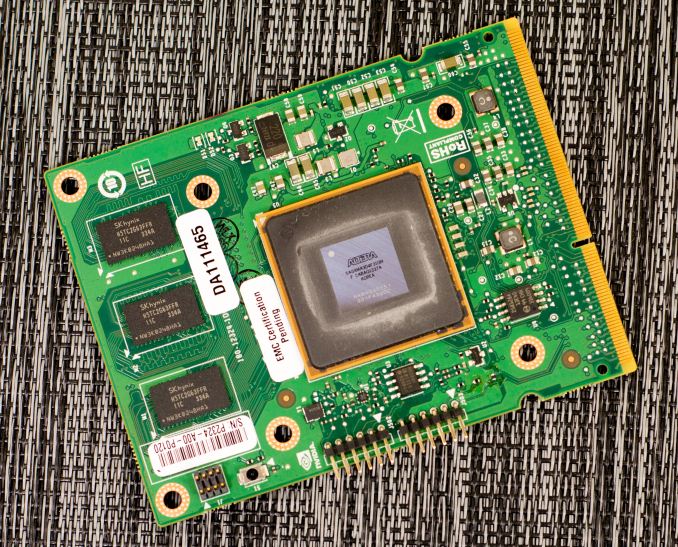
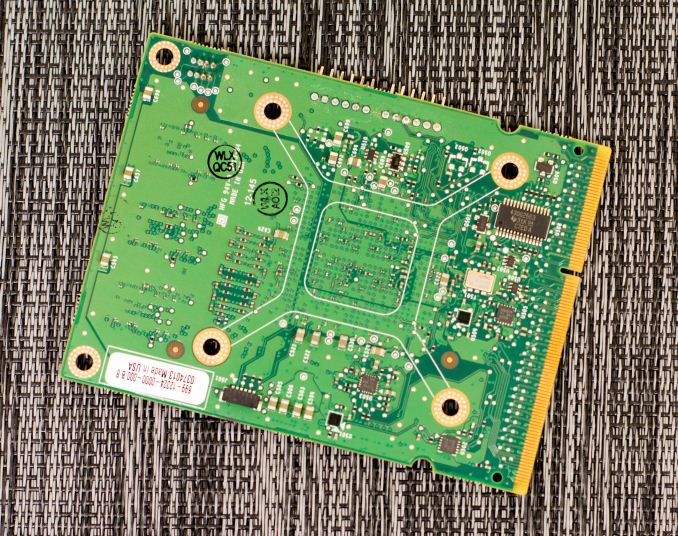








193 Comments
View All Comments
Jelic - Thursday, December 12, 2013 - link
Hmm, interesting article. I actually currently have the ASUS VG248QE. While gsync sounds intriguing, what I find even more promising is the use of lightboost to give CRT like quality to the panel. WIth my current setup I have a GTX 680 with the max framerate limited via EVGA's OC tool to 120fps. On a 1080p screen, with 120hz refresh rate, and 2d lightboost enabled you get absolutely no motion blur, very little tearing, and overall an amazing gaming experience. Since you have the hardware already, I'd be interested in hearing your opinion on 2d lightboost + gsync (at 120hz), and if that makes any difference. Also I'd love it if Anandtech did an article on lightboosted monitors as well! My ideal monitor would be something like a 27in 2560x1600 IPS panel with 120hz lightboost supported... of course I'd need something like dual 780s to get the most out of it, but it'd be well worth it to me heh.DesktopMan - Friday, December 13, 2013 - link
Lightboost doesn't work well on low framerates since you'd see the backlight flicker. If you flicker it more than once per frame you introduce retina blur again. It works best at high, stable framerates. G-Sync would still be useful with lightboost if your framerate hovers between 60 and 120 though.mdrejhon - Friday, December 13, 2013 - link
Just so all readers know, the great news is there are several different strobe backlights now:- LightBoost
- Official sequel to LightBoost (coming with G-SYNC monitors), mentioned by John Carmack
- EIZO's FG2421
- BENQ Blur Reduction (behaves like LightBoost, but via monitor menus)
- Sony's Motionflow "Impulse" (GAME MODE strobe backlight, low lag, no interpolation)
Some of them darken a lot, and others darken less. Some have better contrast ratios, and much better colors. Some of them (BENQ Z-series) can strobe at 75Hz and 85Hz, if you want zero motion blur with a bit less GPU horsepower. Some of them are zero-ghost (no double-image effect). But you can't "get it all" simultaneously.
From my experience playing on the EIZO FG2421 (warmed up after 30 mins to reduce VA ghosting on cold panels), it's lovely to have a bright and colorful picture, something that LightBoost has difficulty with. The VA panels ghosts a bit more (until I warm up), but when I sustain 120fps@120Hz (Bioshock Infinite, VSYNC ON on a GeForce Titan), it produces spectacular motion quality, the most CRT quality I have ever seen.
Now, if I fall below 100fps a lot, like Battlefield 4, I prefer G-SYNC because it does an amazing job of eliminating stutters during fluctuating framerates.
blackoctagon - Sunday, December 15, 2013 - link
And does G-Sync offer any benefit if you're ALREADY at 120fps@120Hz? Because, if so, surely someone needs to review the VG248QE with both G-Sync and LightBoost enabled at the same time :)web-cyborg - Thursday, December 12, 2013 - link
All of those articles focus on variable hz function of g-sync and not the supposed "superior to lightboost" backlight strobing option. The articles say "30 to 40 fps is 'fine'", with 40 being the sweet spot. I would disagree. These same people complain about marginal input lag milliseconds, yet accept long "freeze-frame" milliseconds with open arms in order to get more eye candy. I think people will be cranking up their graphics settings and getting 30 - 40fps. At 30fps you are frozen on the same frame of world action for 33.2ms while the 120hz+120fps user sees 4 game world action update "slices". At 40fps you are seeing the same frozen slice of game world action for 25ms, while the 120hz+120fps user see 3 action slice updates. This makes you see new action later and gives you less opportunities to initiate action, (less "dots per dotted line length") then you add input lag to your already out of date game world state you are acting on. Additionally, the higher hz+higher frame rates provide an aesthetically smoother control, aesthetically smoother higher motion definition and animation definition. Of course 120hz also cuts the continual FoV movement blur of the entire viewport by 50% (vs 60hz baseline full smearing "outside of the lines" blur) as well, and backlight strobing at high hz eliminates FoV blur essentially (eizo FG2421 now, "superior to lightboost" backlight strobing mode of g-sync monitors in the future supposedly).web-cyborg - Thursday, December 12, 2013 - link
60hz vz 120hz vs backlight strobing. Note that newer monitors like the eizo FG2421 and future "superior to lightboost" backlight functionality of g-sync strobe mode (unfortunately mutually exclusive from the variable hz mode) do not/will not suffer the lowered brightness and muted colors of the lightboost "hack" shown in these examples. However they will eliminate the blur which is shown in these examples.http://www.blurbusters.com/faq/60vs120vslb/
Now remember that in reality it's not just a single simple cell shaded cartoon object moving across your screen, rather your entire 1st/3rd person viewport of high detail textures, depth via bump mapping, "geography"/terrain, architectures and creatures are all smeared "outside of the lines" or "shadow masks" of everything on screen every time you move your FoV at 60hz, more within the "shadow masks" of onscreen objects at 120hz but still losing all detail, textures and bump mapping, and essentially zero blur when using backlight strobing over 100hz.
web-cyborg - Thursday, December 12, 2013 - link
I'm more interested in high fps and zero blur obviously, even if I have to turn down the ever higher *arbitrarily set by devs* graphics cieling "carrot" that people keep chasing (that ceiling could be magnitudes higher if they wanted).I still play some "dated" games too.. fps is high.
You are seeing multiple frames skipped and behind a 120hz+120fps user, watching "freeze-frames" for 25ms to 33.2 ms at 30fps and 40fps, and every time you move your FoV you are smearing the entire viewport into what can't even be defined as a solid grid resolution to your eyes/brain. So much for high rez.
I think people are sacrificing a lot motion, animation, and control wise aesthetically as well as sacrificing seeing action sooner and being given more and sooner opportunities to initiate actions - to reach for higher still-detail eye candy aesthetically.
You don't play a screen shot :b
mdrejhon - Thursday, December 12, 2013 - link
Hello fellow guys at AnandTech -- I've created a new TestUFO animation (via software interpolation) that simulates the smooth framerate ramping that G-SYNC can do:http://www.testufo.com/stutter#demo=gsync
It shows off stutter-free frame rate variances as well. I created this unique animation (I think, the only one of its kind on the Internet), for the Blur Busters preview of G-SYNC.
HisDivineOrder - Thursday, December 12, 2013 - link
The "biggest issue with what we have here today" is not that it's nVidia only. That's a big issue, to be sure.The biggest issue is that there are a LOT of us who have fantastic displays that we paid high dollar for and will not go down to 16:9 or TN panels. Hell, a lot of us won't even go and spend the same money we just spent on our incredibly expensive and incredibly hard to resell monitors to get this technology that should have 1) been included from the start in the LCD spec and 2) should have a way of being implemented that involves something other than tossing our old monitor in the bin.
They need to make an adapter box for monitors without built-in scalers that translates what they're doing to DVI-D. Else, there's a LOT of people who won't be seeing this technology have any use until they get around to making 4K monitors that include it with IPS and at an even semi-reasonable price.
Really, the biggest problem is they didn't find a way to adapt it for all monitors.
web-cyborg - Friday, December 13, 2013 - link
in regard to the backlight strobing functionality, the eizo FG2421 is a high hz VA panel whose backlight strobing "zero blur" capability is independent of gpu camps.We are talking about gaming usage. Practically all 1st/3rd person games use HOR+ / virtual cinematography which means you see more of a scene in 16:9 mode, even if you have to run 16:9 mode on a 16:10 monitor. 16:10 mode cuts the sides off basically.
http://www.web-cyb.org/images/lcds/HOR-plus_scenes...
Gpu upgrades can run $500 - $1000 now too for high end, and somewhere in between or double for dual gpus. 16:10 / 16:9 is really a bigger deal at 1080 vs 1200 even for desktop use. 16:10 30" is not as much real-estate difference as the size suggest between 2560x 27", the 30" pixels are a lot larger. Here is a graphic I made to show three common resolutions compared at the same ppi or equivalent percieved ppi at viewing distances.
http://www.web-cyb.org/images/lcds/4k_vs_27in_vs_3...
Imo for the time being you are better off using two different monitors, one for gaming and one for desktop/apps instead of trying to get both in one monitor and getting worse performance/greater trade-offs combined in one (i.e 60hz vs 120hz, lack of backlight strobing or gsync, resolutions too high to maintain high fps at high+/ultra gfx settings relative to your gpu budget, resolutions too low for quality desktop/app usage,lots of tradeoff, etc).
Upgrades to display and gpu technology are the nature of the beast really. Up until now you would be better off getting a korean knock off 2560x1440 ips or the american mfg versions for $400 or less, and put a good 120hz gaming monitor next to it imo Eizo FG2421 24" VA backlight strobing model is around $500, so for $900+ (and a good gpu of course) you could have better of both worlds pretty much for the time being. Going forward we know g-sync will have backlight strobing functionality but we don't know if any of the higher resolution monitors due to come out with g-sync will have 100hz+ required to support strobing adequately. If they don't, again we are back to major tradeoffs gaming vs desktop use again (low hz -> low motion+animation definition/much less game action updates shown per second/lower control definition, full 60hz baseline smear bluring out all detail and textures during continual FoV movement/motion flow).